“We are going to have lunch in Moulay Idriss” announced our fearless chauffeur-cum-guide. The name sounded unfamiliar and certainly was not in our itinerary. He repeated more slowly and waved somewhere to his right. On closer inspection, further toward the horizon, a town was rising from the sea of green fields.
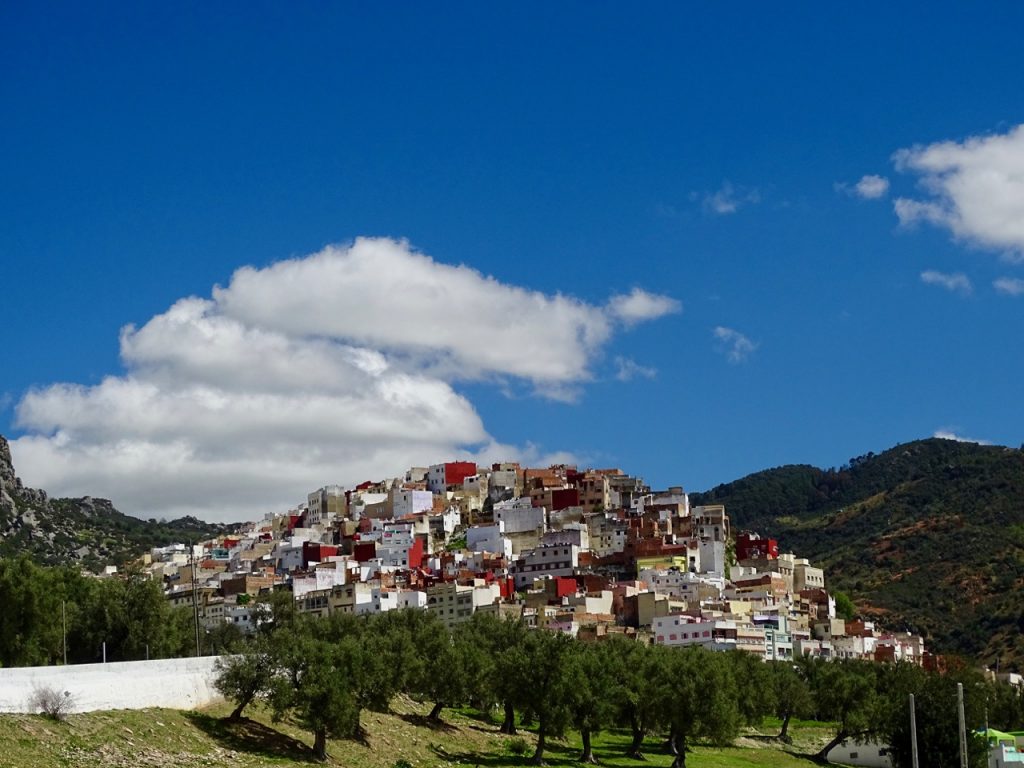
The best things happen by accident. A wrong turn, a misspelled street name even an unfamiliar sound could lead to an extraordinary discovery. Forgetting prearranged plans, we readily agreed to make a detour.
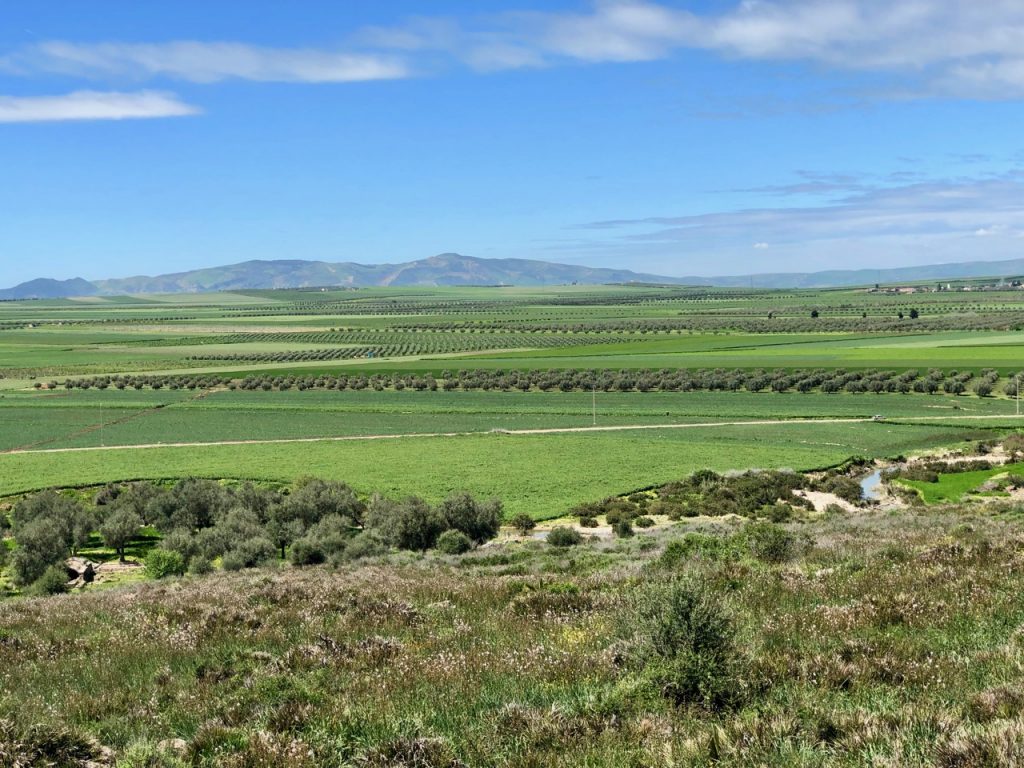
Moulay Idriss is hiding in a valley that could be easily mistaken as an Italian countryside. The olive groves dot the landscape with the Mount Zerhoun serving as a dramatic backdrop. The photogenic town climbs up a hill in a classic medieval fashion. The setting is so perfect that, at first sight, you can’t help but wonder whether it’s real or you stumbled upon a movie set.
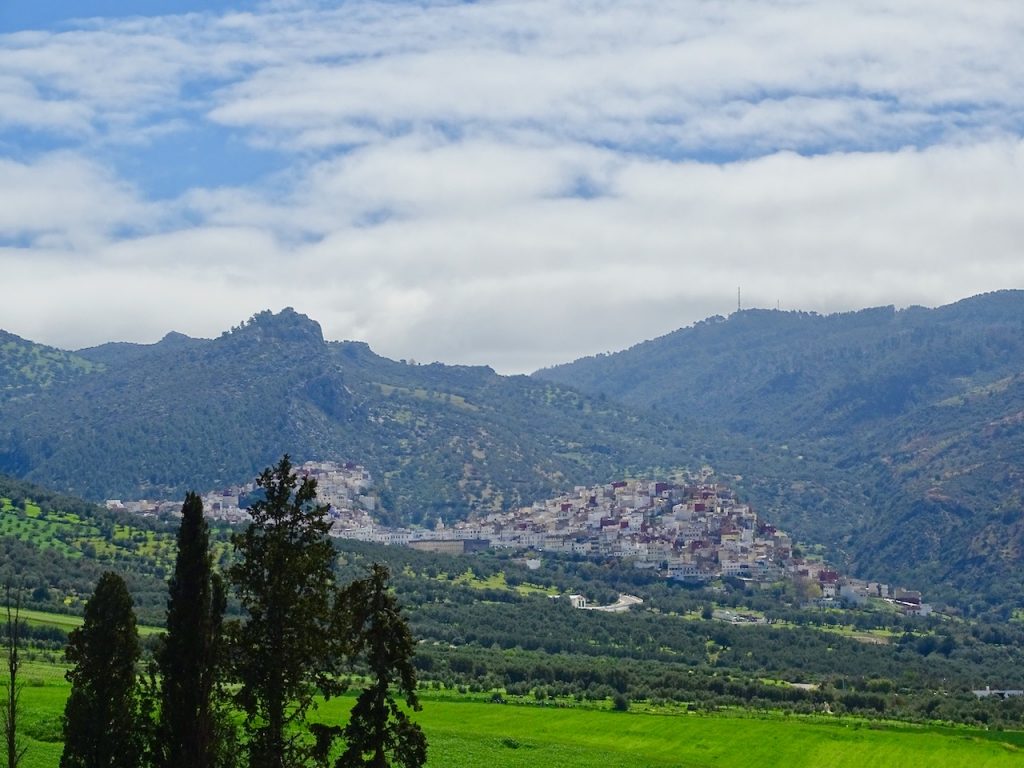
I always imagined Morocco in vibrant reddish or deep yellow colors. A vivid green landscape with a white jewel of a city caught me by surprise. It was invigorating and uplifting.
Before going any further sharing our experience, let’s have a brief excursion into the origins of Moulay Idriss and its significance in Moroccan history.
Dubbed as the holiest town, Moulay Idriss is an important religious site in northern Morocco. Ask locals, and they would proudly tell you that it holds a special place in their hearts. Thanks to the tomb of Moulay Idriss Al Akhbar, the town’s founder and a descendant of the Prophet Muhammad, for centuries it has been a place of pilgrimage and a location of the mousseum, a summer festival celebrated during the second week of August. Many Moroccans believe that five (or six, depending on who you ask) pilgrimages to Moulay Idriss during the moussem equal one hajj to Mecca.
Edith Wharton, the first woman to win the Pulitzer Prize for Literature, visited Moulay Idriss in 1919. She extensively traveled through Morocco immediately after World War I and wrote the first-ever Morocco guidebook. If you interested in country’s history and what it looked like during the first quarter of the 20th century to the eyes of a foreigner, this is worth reading. There is a chapter in her book where she describes a day spent in Moulay Idriss as one of the first westerners witnessing moussem.
Moulay Idriss Al Akhbar played a vital role in the history of Morocco. He was the great-grandson of the Prophet Muhammad and the heir to the caliphate in Damascus. However, during the civil war that led to the Shia-Sunni divide, he fled to Morocco. Through Tanger, he traveled to Volubilis. The dominant local Berber tribe of Awraba took him and made him their religious leader (imam). As Idris I, he ruled from 788 to 791 and was viewed as the leader of the entire region. He founded the Idrisid dynasty and is regarded as the founder of Morocco. He built his capital on a nearby site that was more easily defended than Volubilis. The town was later named Moulay Idriss after him.
On Saturday afternoon, Moulay Idriss was buzzing with activity. Finding a parking space proved to be an entertaining experience involving a police officer navigating traffic, a self-appointed “helper” who produced a lot of noise and little actual assistance, and impressive maneuvering from our driver who managed to squeeze a size 4 car into a size 2 space.
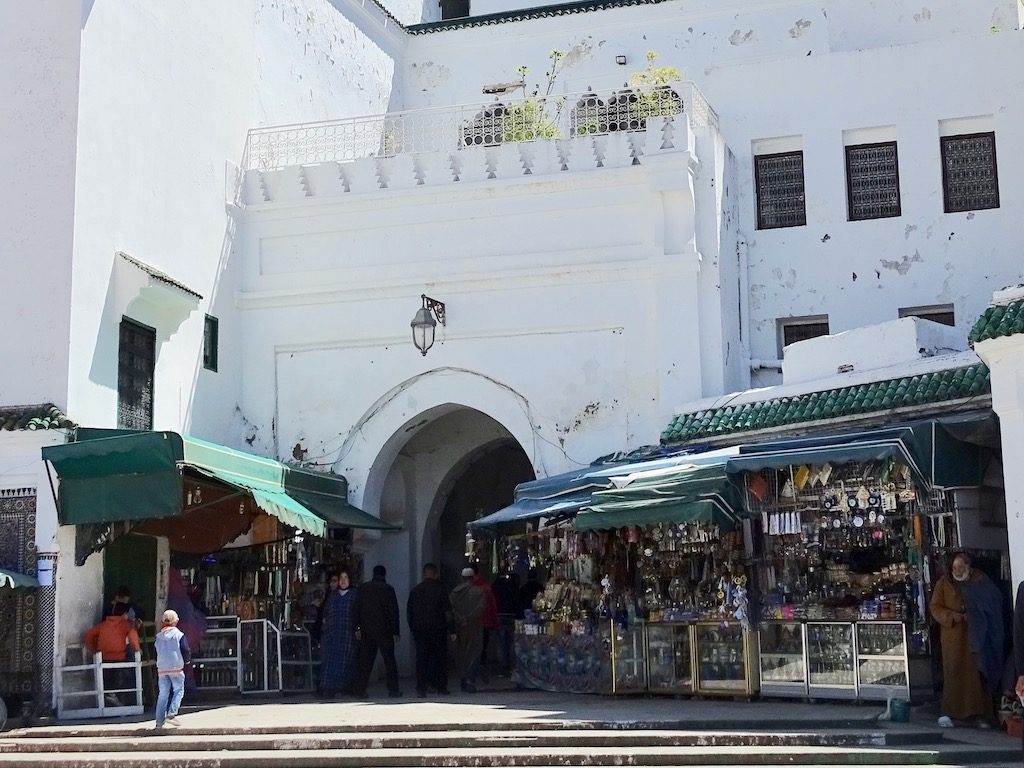
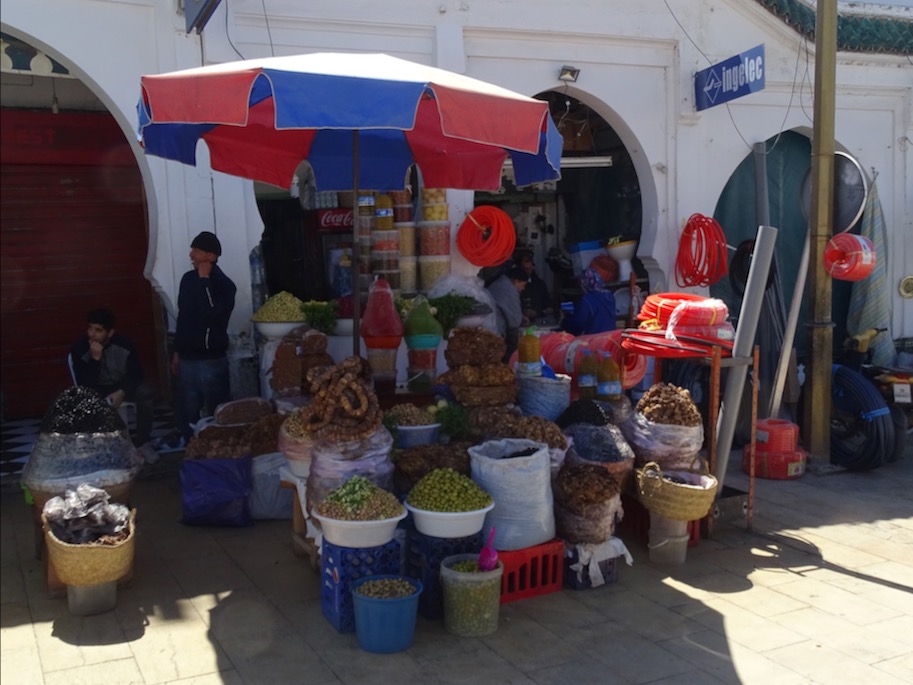
The big square in front of the main gates was filled with merchants and food stalls. They all looked the same to me, but our guide didn’t hesitate with his choice and confidently strolled to his pick. We followed behind giving him the authority to choose where, what and how we were going to eat for lunch.
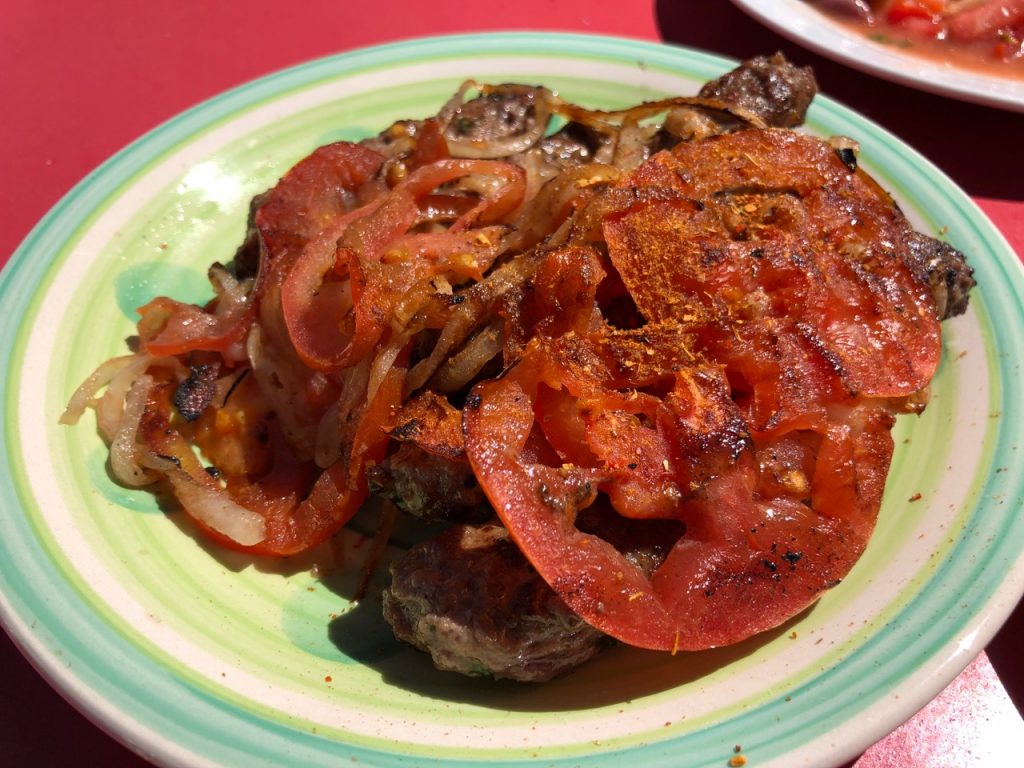
I was hungry, but before devouring whatever very serious-looking grill proprietor decided to serve, I caught myself admiring the amazing colors on our plates. Sparkling reds of tomato salad dotted with specks of parsley were sitting next to a multicolored selection of pickled vegetables. If this kind of food wouldn’t make you smile, I do not know what would.
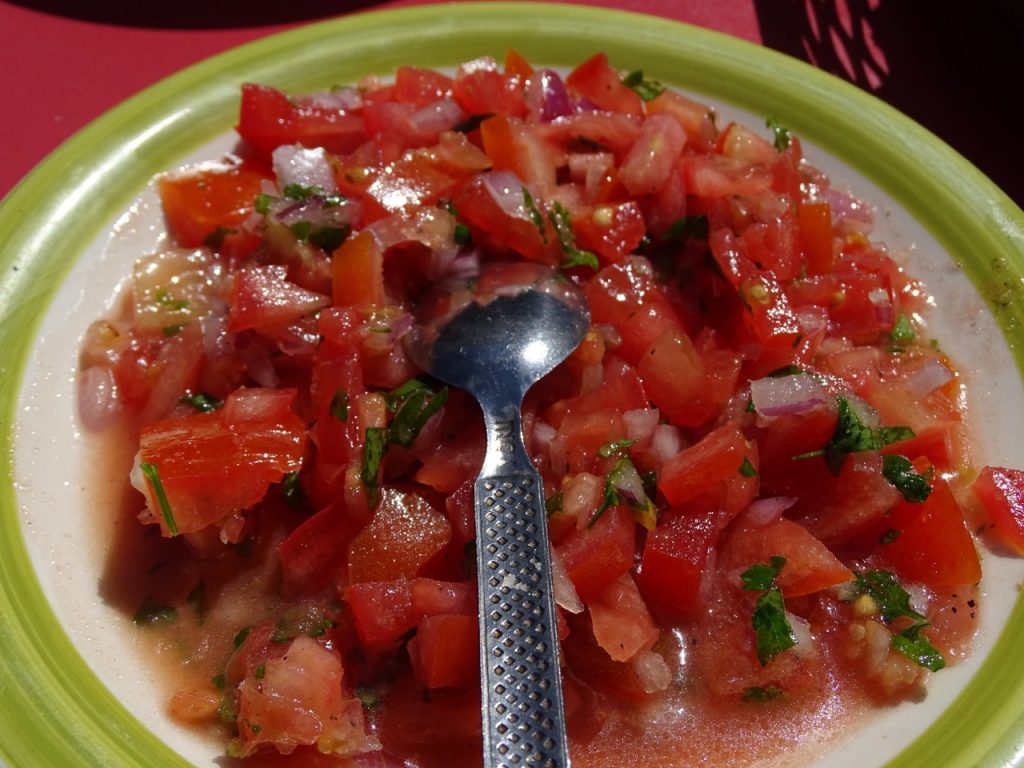
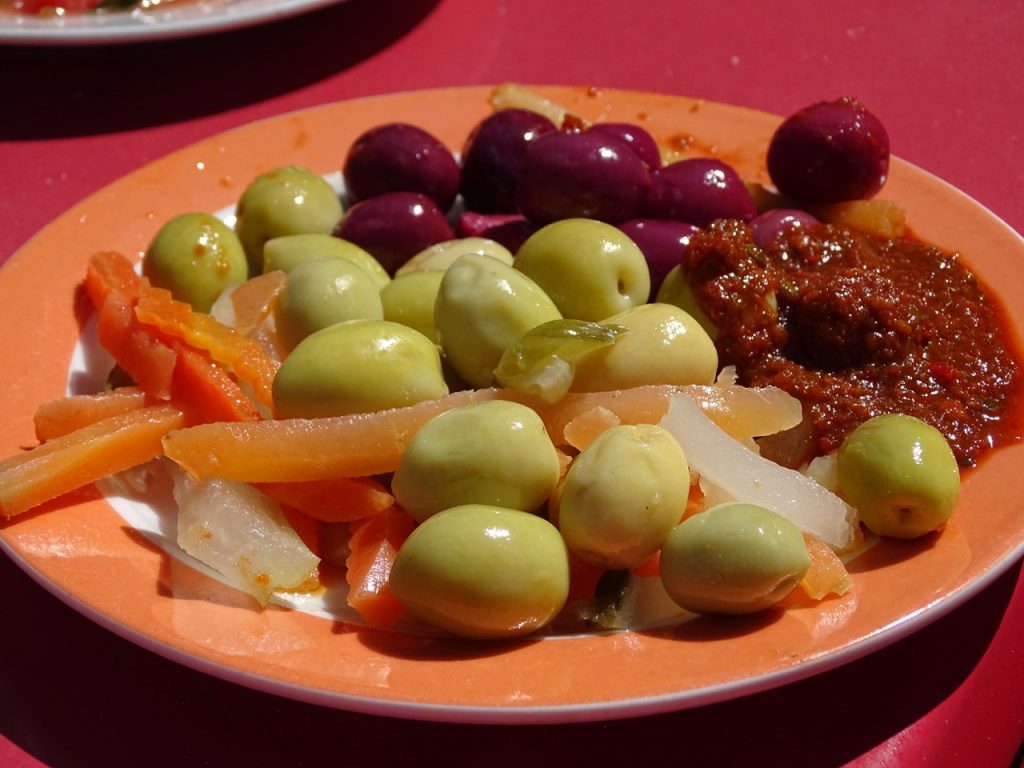
Of course, the lunch ended with the customary mint tea. The last morsels of the meal shared with an adorable kitten who hypnotized our food since we brought plates to the table, my attention switched to rhythmic music rapidly getting louder right behind us.
Not knowing what was going on, I caught just a few seconds of a colorful performance before the guys drifted away. As it turned out, they were Gnawa musicians.
Since it was an unplanned extra stop, we didn’t have a clue what we might find inside the town walls of Moulay Idriss. That’s when our biggest travel faux pas to date happened.
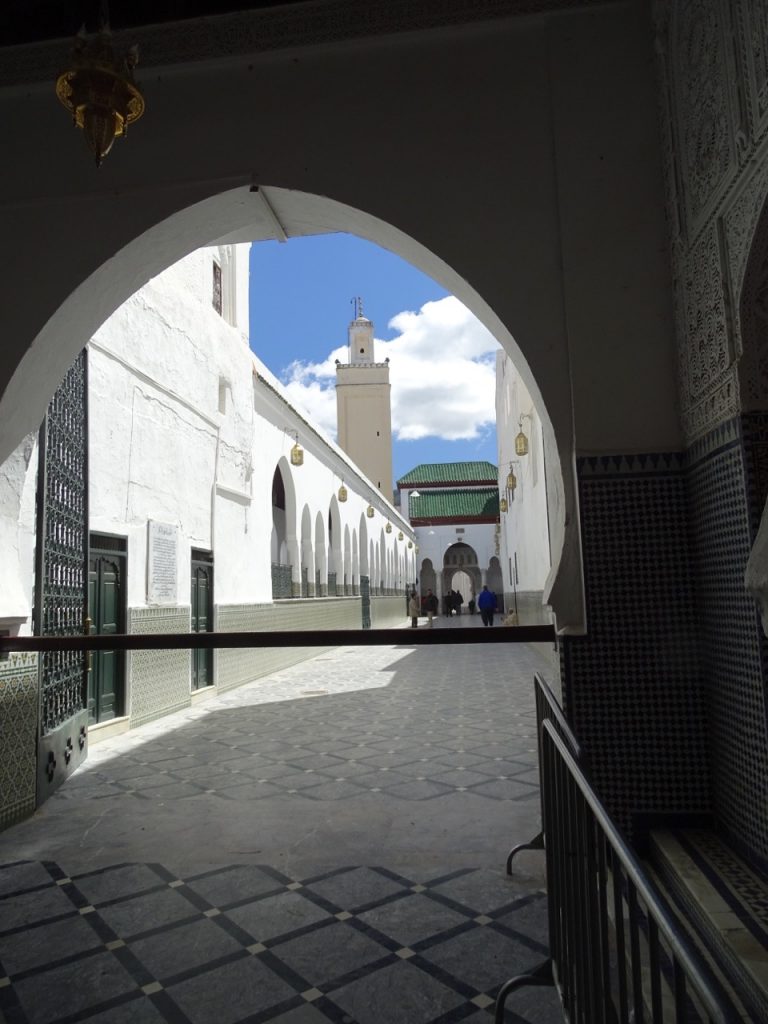
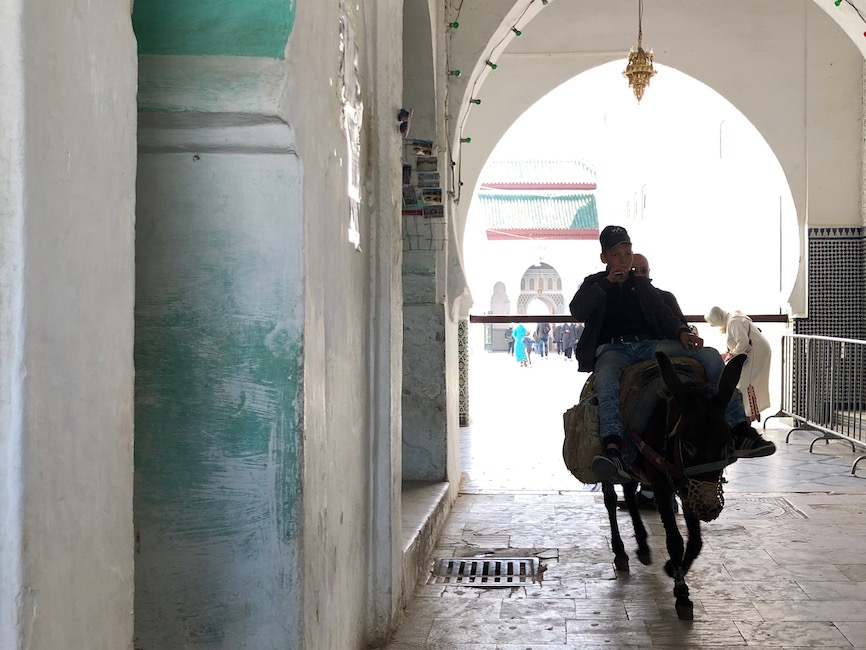
Eager to get a closer look at an intricate colonnade and seeing people walking behind the bar, AT attempted to follow their lead and immediately was stopped by a couple of stern-looking gentlemen. After a bit of commotion and gesticulation, a younger guy appeared from somewhere and explained in fairly good English what happened.
We were standing in front of the entrance to the Mausoleum of Moulay Idriss Al Akhbar, the most important pilgrimage site in Morocco.
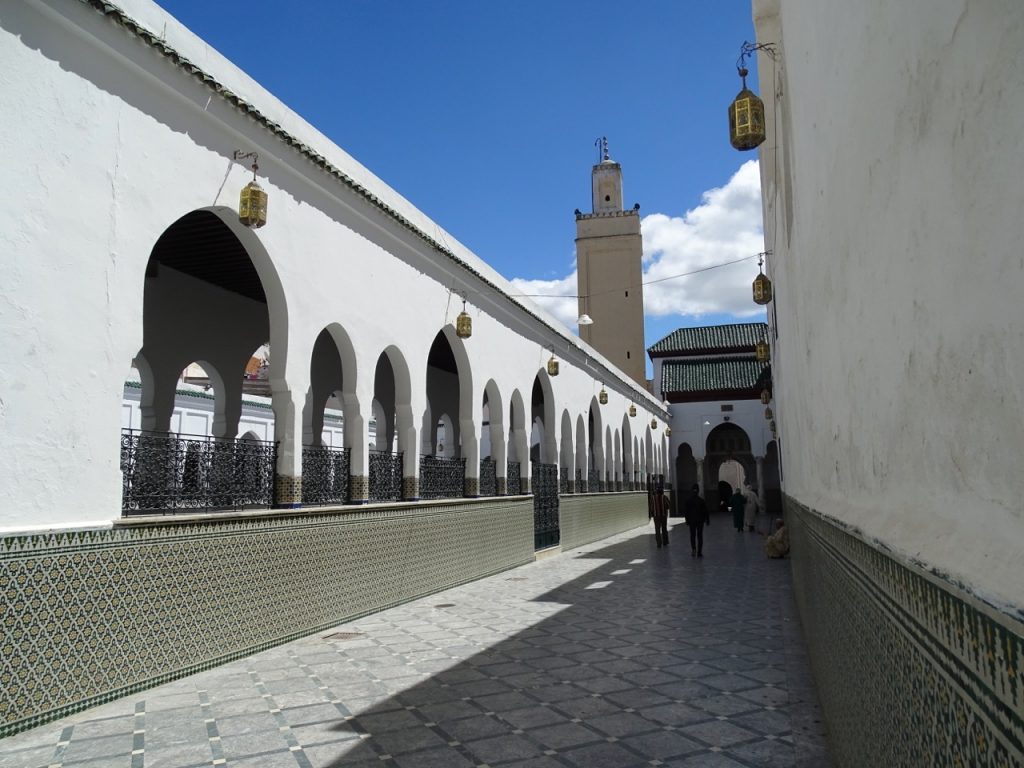
Moulay Idriss is a remarkable place. For centuries, the town remained strictly Muslim. Until 2005, non-Muslims were not allowed to stay overnight. Apparently, it was an unwritten rule that was supported by the lack of public accommodations. Guidebooks at the time warned the tourists who dared to visit to be out of town by dusk.
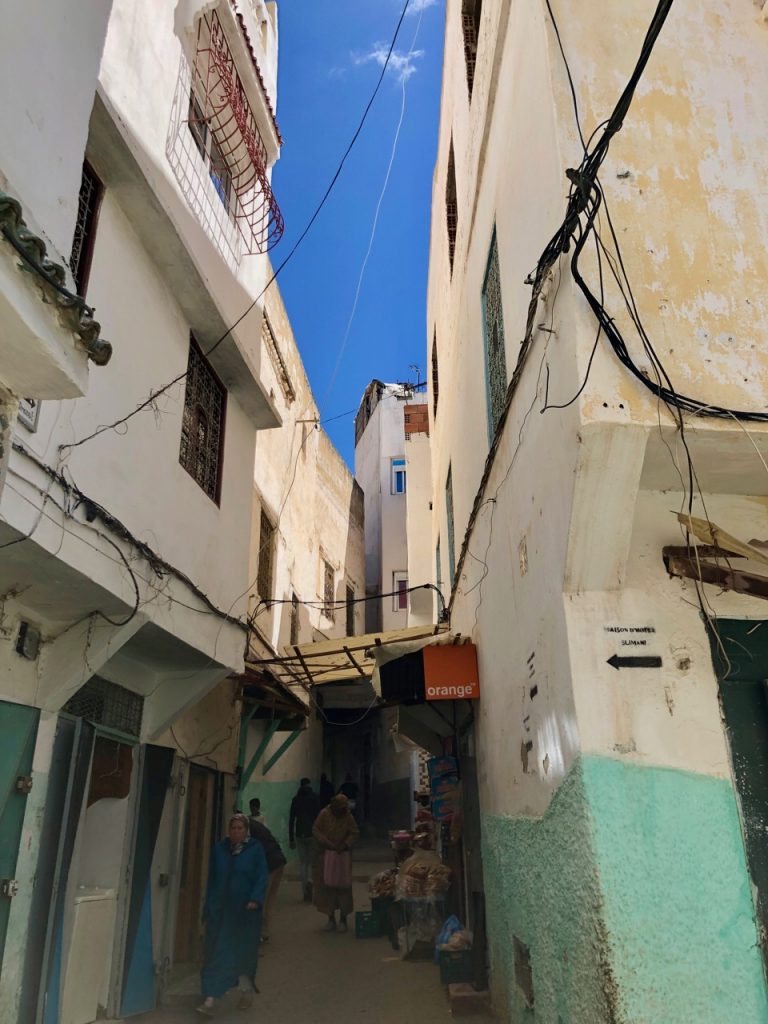
Despite loosening restrictions, an attempt to make Moulay Idriss better known in the Western world and more prominent tourist attraction hasn’t succeeded yet.
During our visit, we haven’t seen any other westerners around. Actually, it was quite strange since Volubilis, which was crowded and full of non-Muslims, is just 5 kilometers away.
Thanks to its unusual history, Moulay Idriss managed to stay “frozen in time.” It still retains the charm of a bygone era. Walking windy narrow streets feels like the Time Machine really exists.
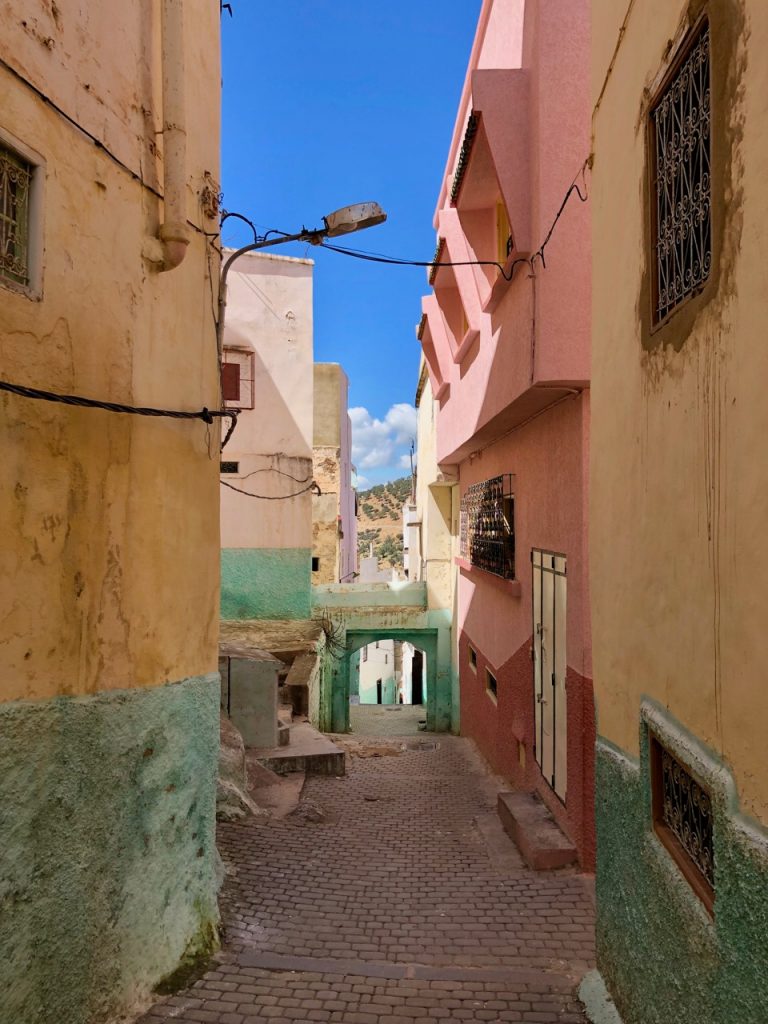
From our debacle at the mausoleum’s entrance, we acquired a self-appointed guide (remember the English-speaking young guy who explained to us the local customs?). Our feeble attempts to shake off his eagerness produced no results. We conceded to his presence and made the best out of it by asking as many questions as possible.
To be fair, his knowledge of a maze of passages and tunnels through the town was pretty useful.
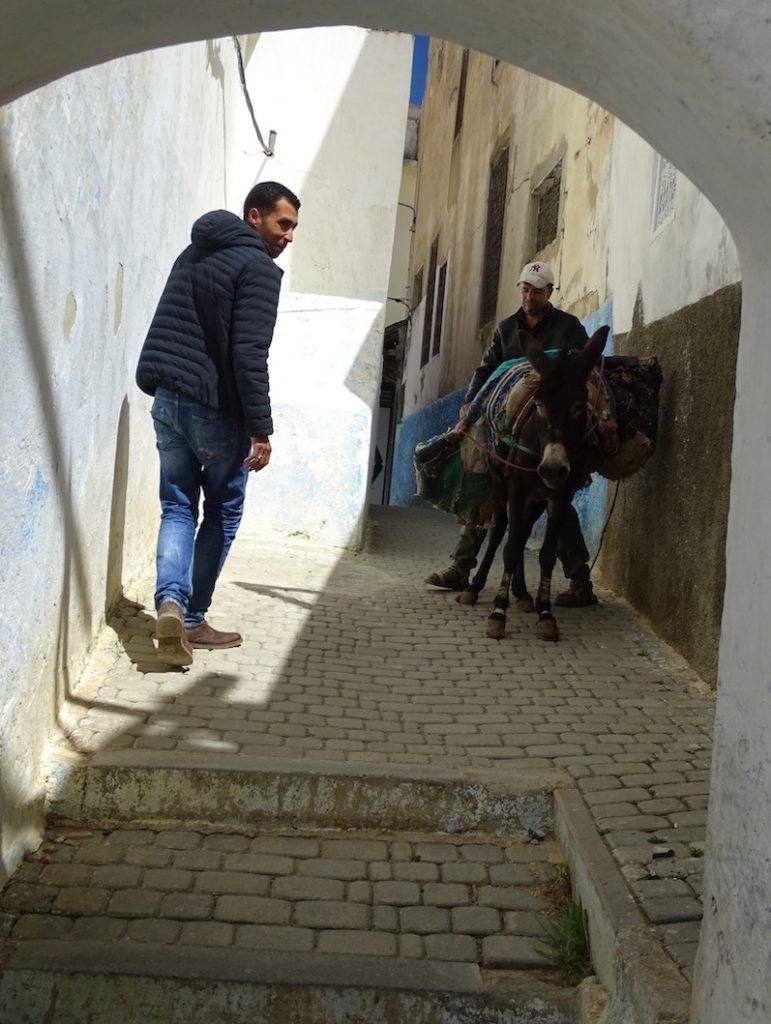
The town consists of two parts. Facing the mausoleum, the Berber one is on the left; the Muslim – is on the right. By chance, we turned left and for the next couple hours jumped back into the 19th century.
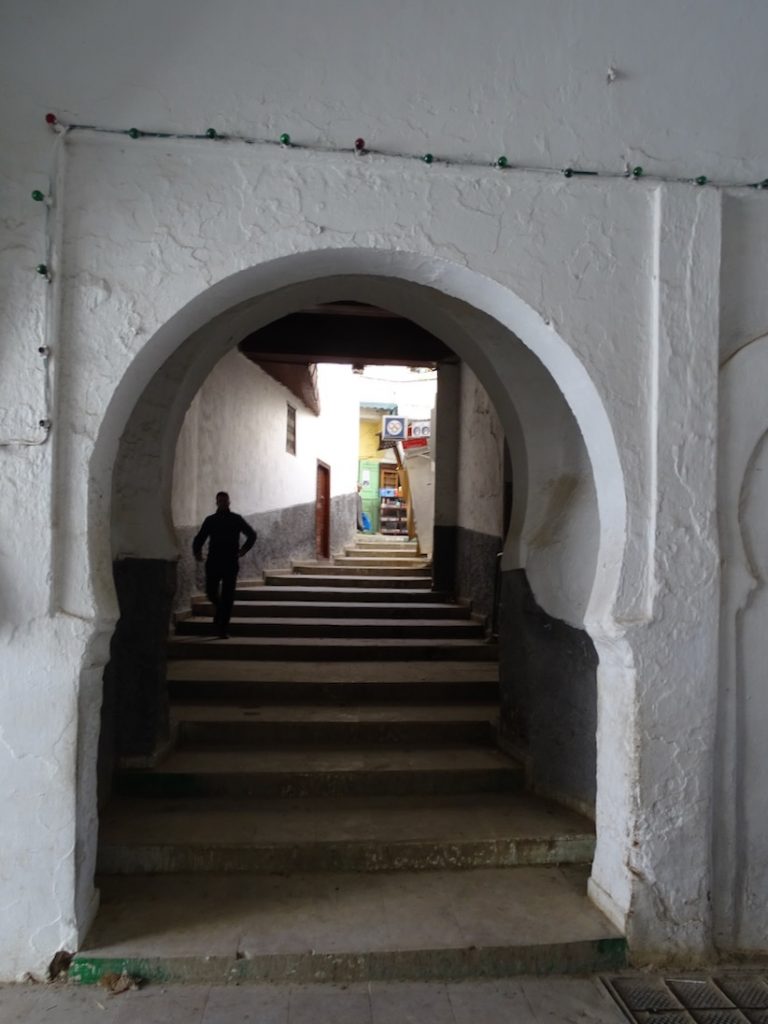
Saturday was a market day. Locals went down to the bottom of the hill to buy whatever they needed for the next week. Next, they loaded their supplies on donkeys to bring back to their homes. The streets are too narrow for cars and steps are everywhere, so donkeys are the only feasible mode of transportation.
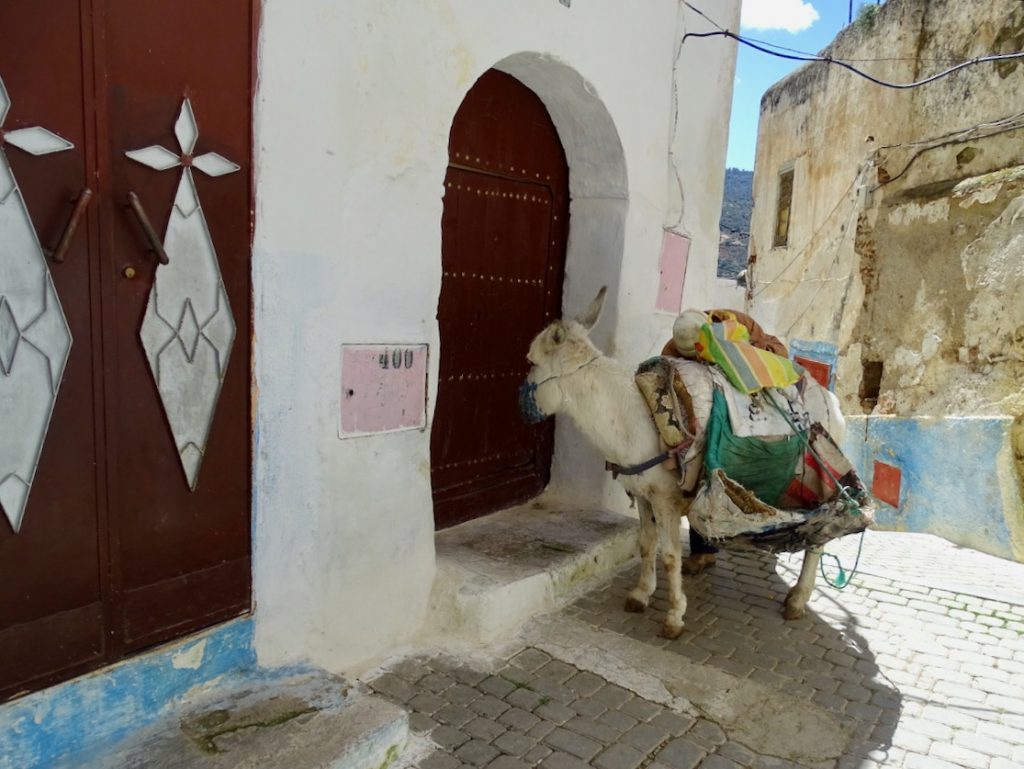
Going up and up and up, brought us to an incredible lookout at the top of the hill. The almost perfect conical shape of Moulay Idriss laid in full view. It looked like an illustration from a fairytale book.
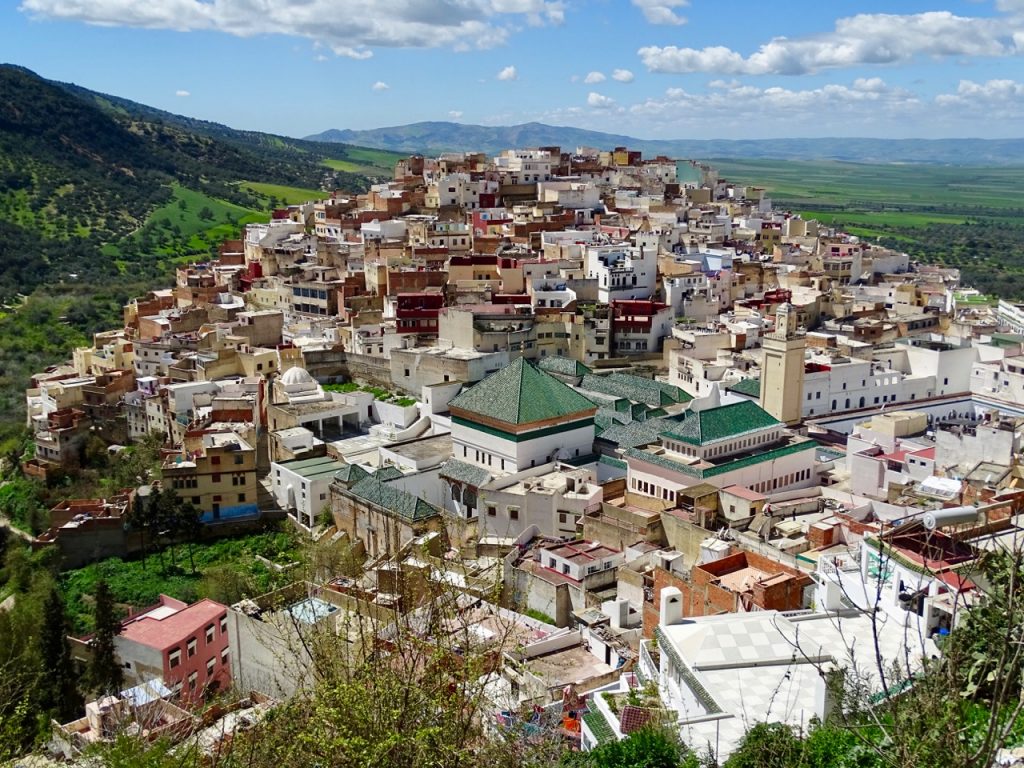
On the way down, we came by another unique site – Idriss Medersa, an ancient Koran school. It was built in the 14th century by Sultan Abou el Hassan using stones from nearby Volubilis. Idriss Medersa is famous for its unusual Minaret added to the building in 1939. The minaret is circular, an uncommon design throughout the Muslim world, and decorated with green ceramic tiles featuring inscriptions of the 114 suras (chapters) of the Quran.
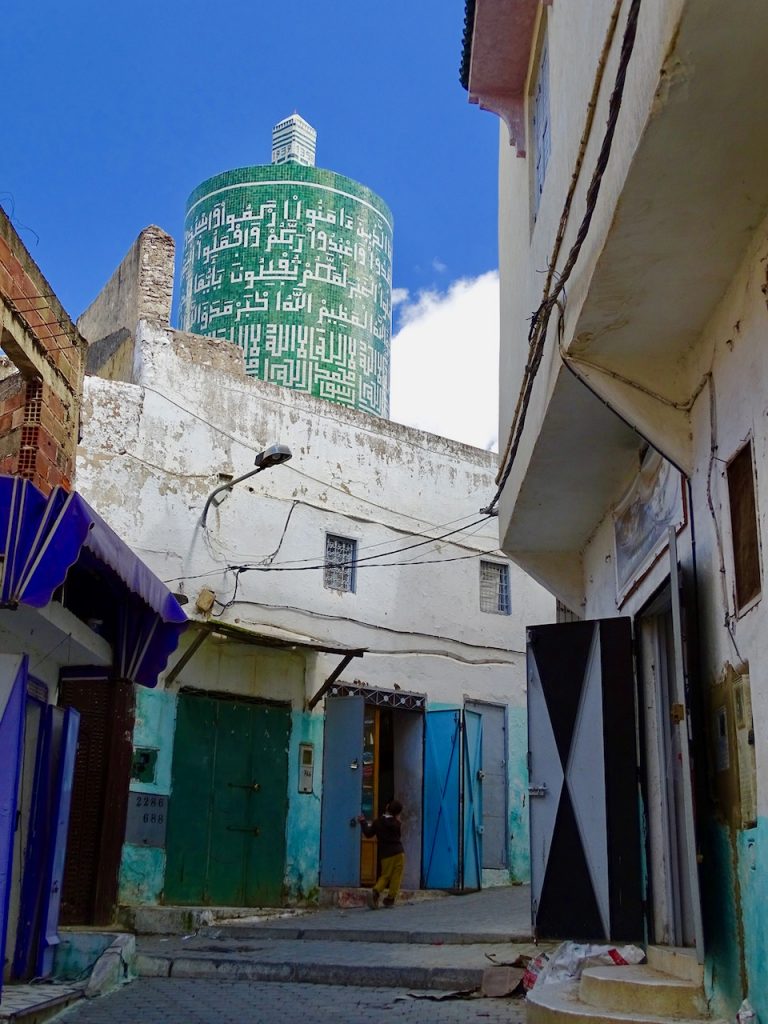
Perhaps, my favorite part of our Moulay Idriss walkabout was just wandering the streets. You never know what comes next there – a cavernous tunnel, intricate metalwork of a random door, a weathered building with beautiful pastel-colored walls…
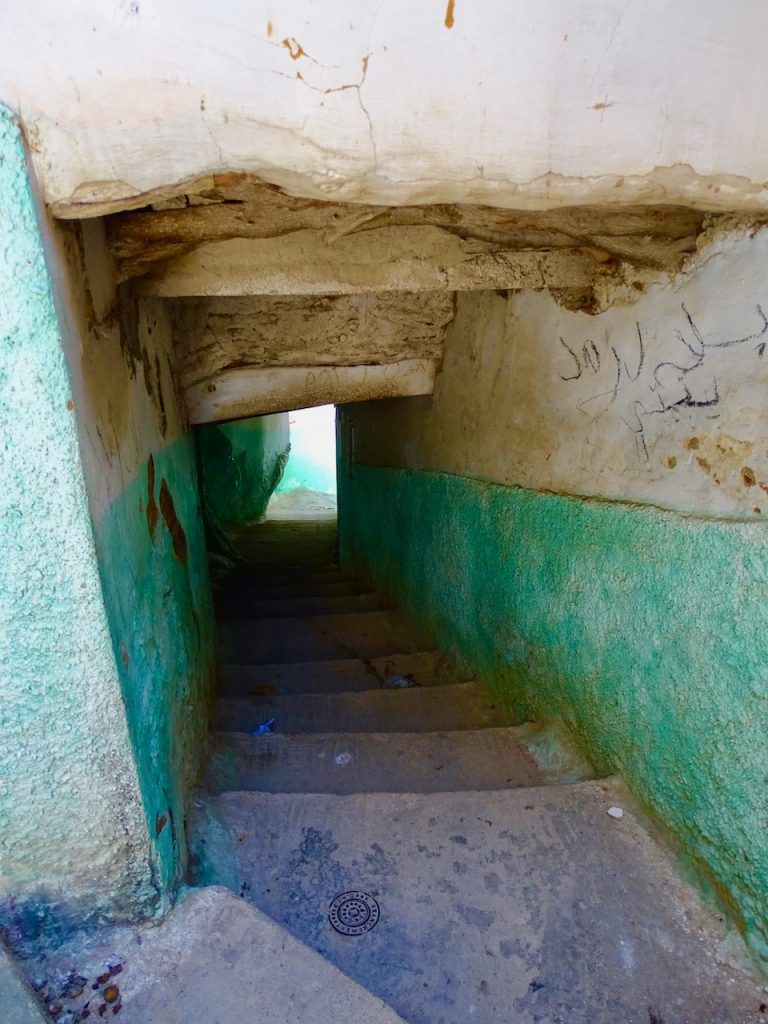
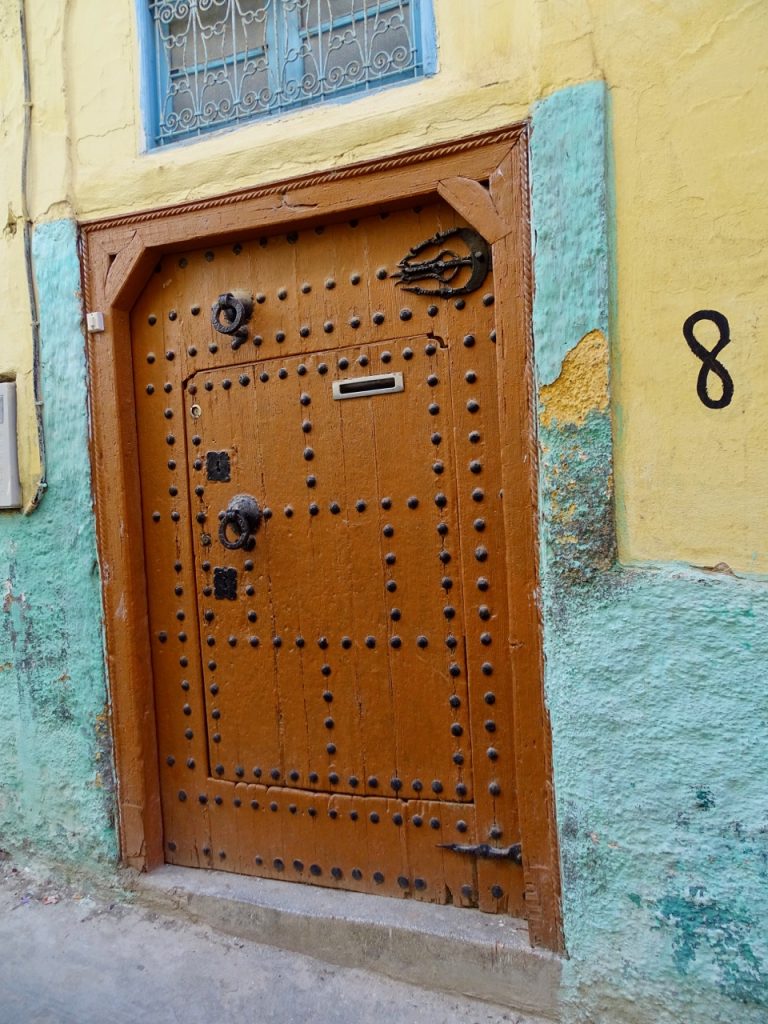
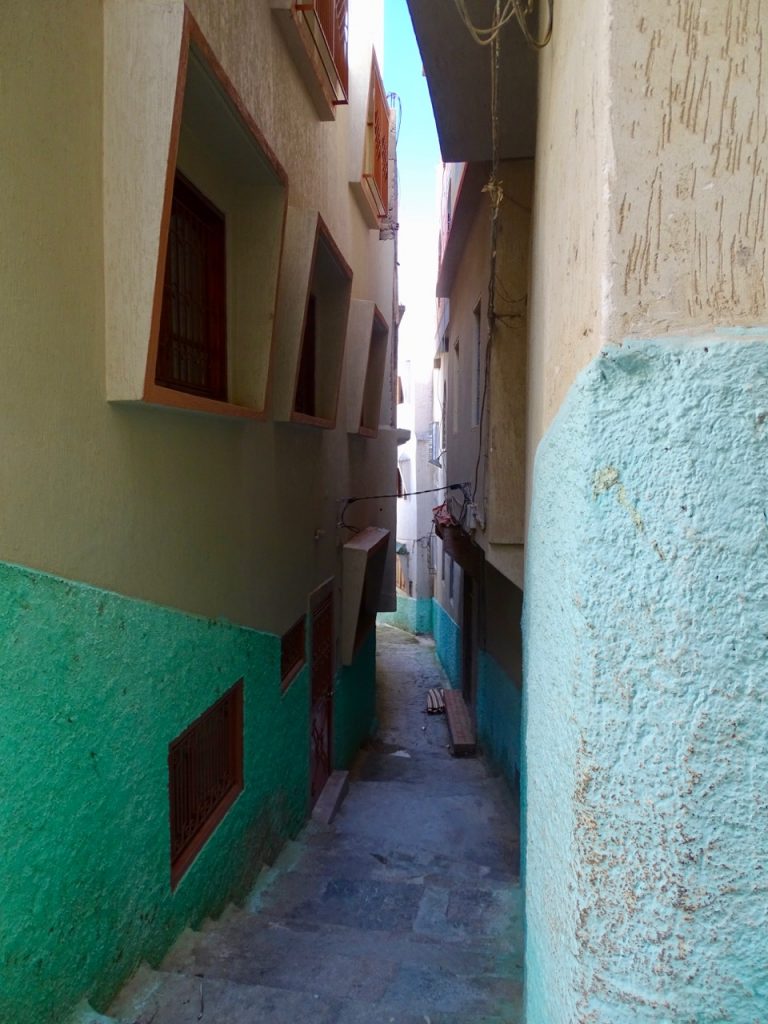
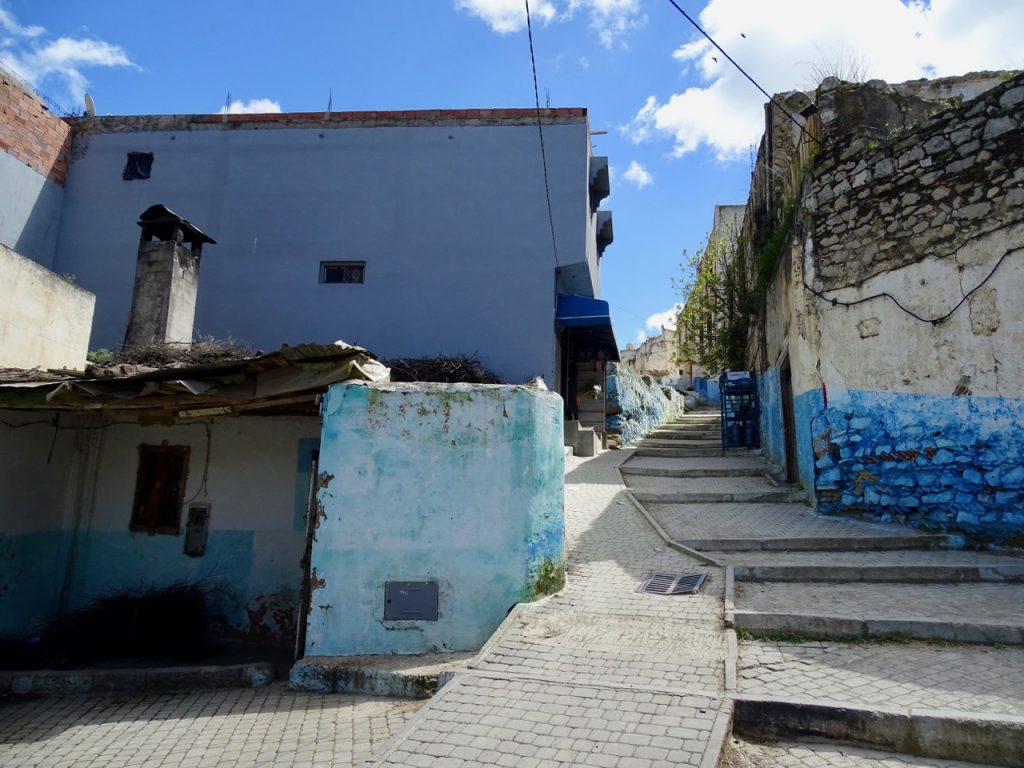
In total, we spent almost four hours in Moulay Idriss before leaving for our next destination – Meknes. In hindsight, I would prefer to spend more time in Moulay Idriss. We didn’t get a chance to even briefly visit the other side of the town. I think a day is the right amount of time to explore Moulay Idriss.
P.S. When the time came to part ways by the gates at the bottom of the hill, our self-appointed guide in no certain terms demanded a payment. With a bit of panache, he asked for 150 Dirhams (roughly 16 USD). I am guessing that he expected customary haggling. Meeting no resistance, he snatched the money and instantly disappeared. Without his directions. I am not sure we could find the overlook to take this one-of-kind picture of Moulay Idriss climbing to the top of the hill. Thus, I would gladly double this amount to not to miss the view. C’est la vie.
Share this article on Pinterest by clicking Save button
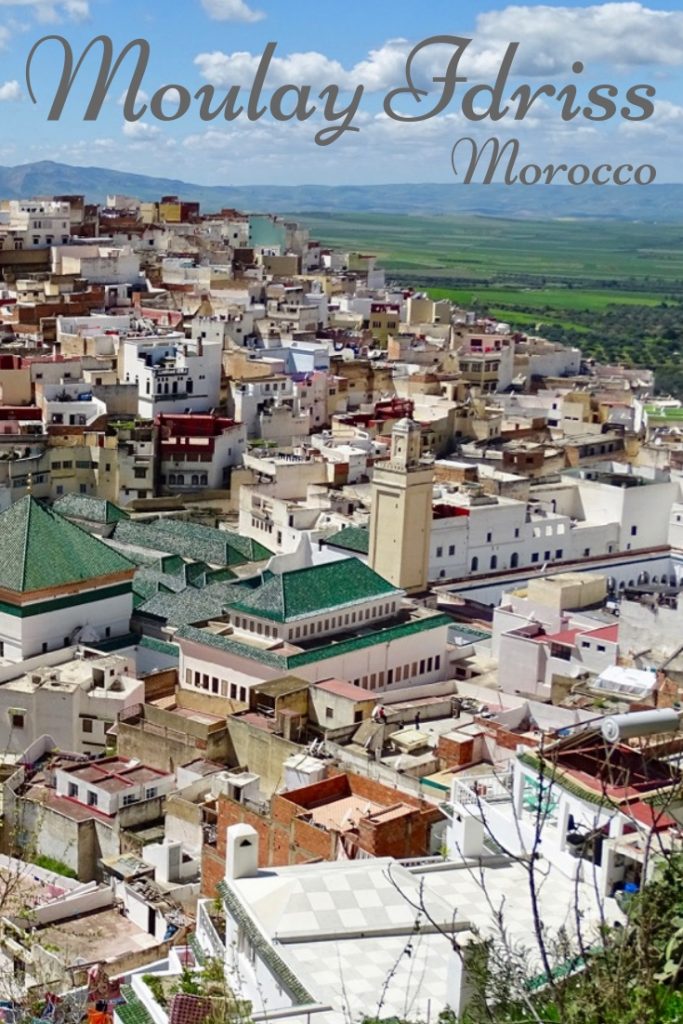
Beautiful, love the colors. In Morocco now and planning to go when I’m in Fes.
Frank (bbqboy)
Thank you, Frank. When you are visiting Moulay Idriss, make sure that you have enough time to walk through both sides of the city (left – Berber; right – Muslim). Sadly, we could do it, and it is something I deeply regret. Cheers!
Nice post!Thanks for sharing!